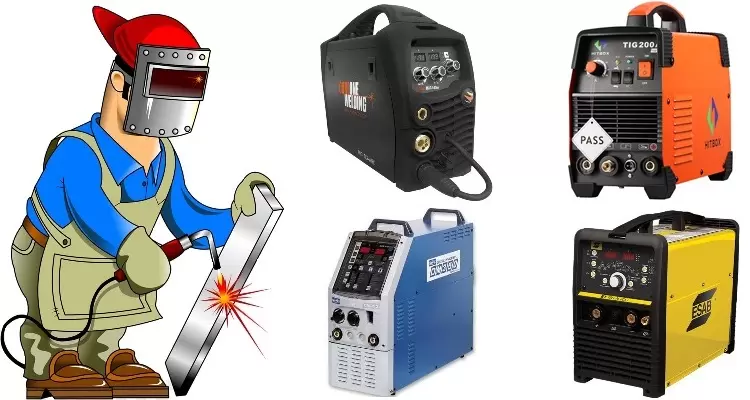With the evolution of welding techniques over the past two centuries, we now have a wide variety of welding machines available in the market. Each type of welding machine has a specific purpose and is best suited for one or two welding techniques in particular.
So, if you are planning to start building your welding toolkit or if you wish to expand your existing welding supply kit, you may want to purchase one or more welding machines depending on the welding techniques you frequently use.
5+ Common Types of Welding Machines and Their Applications
To help you make a more informed decision, we’ve put together a list of the most common types of welding machines that may make a fine addition to your welding supply kit. Check out the details below.
Metal Inert Gas (MIG) Welding Machine
As the name indicates, this type of welding machine is specifically designed to support MIG welding or gas metal arc welding (GMAW) — where the metal electrode is itself used as a consumable to melt and join the metal workpieces. This solid metal electrode is continuously fed into the weld pool, making it quick and easy for the welder to complete the job.
Tungsten Inert Gas (TIG) Welding Machine
A TIG welding machine is exclusively designed to perform tungsten inert gas welding or gas tungsten arc welding (GTAW). Here, a non-consumable tungsten electrode is used to complete the electric arc, and a separate consumable metal wire is fed into the weld pool to complete the welding process.
Shielded Metal Arc Welding (SMAW) Welding Machine
A SMAW machine, also known as a stick welding machine, is a bit older in design and is used to perform conventional stick welding. In this method, a consumable rod coated in flux is manually directed into the weld pool to form the molten material required to join the metal workpieces. A SMAW machine is relatively easier to operate, making it suitable for beginners too.
Flux-Cored Arc Welding (FCAW) Welding Machine
In flux-cored welding, the metal wire has a core made of the flux material. Since this is a semi-automatic process, the use of the FCAW machine is combined with specific manual techniques to join the two metal workpieces.
Laser Welding Machine
In recent years, welding technology has evolved to use laser beams to join metal bits. So, laser welders are the newest addition to the lineup of machines you can add to your welding supply kit. These machines make use of fiber laser beams to join metals as well as thermoplastics. They are now commonly used in the manufacture of small parts and electronics.
Multipurpose Welding Machine
A multipurpose welding machine is exactly what it sounds like. It can be used to perform two or more welding techniques. Most multipurpose welding machines are equipped to carry out MIG and TIG welding. Some advanced multipurpose welders can even support stick and flux-cored welding processes in addition to TIG and MIG welding.
A multipurpose welding machine is understandably more expensive and often less portable than other single-purpose welders. However, they are best suited for professionals who need to switch between different types of welding techniques as a part of their everyday jobs.
Conclusion
If you are a professional welder or a serious hobbyist who likes to experiment with different types of welding techniques, you can always purchase more than one of the welding machines discussed in this article. Alternatively, you can also invest in a multi-process welding machine that can handle two or more types of welding techniques.
Lisa Eclesworth is a notable and influential lifestyle writer. She is a mom of two and a successful homemaker. She loves to cook and create beautiful projects with her family. She writes informative and fun articles that her readers love and enjoy.

